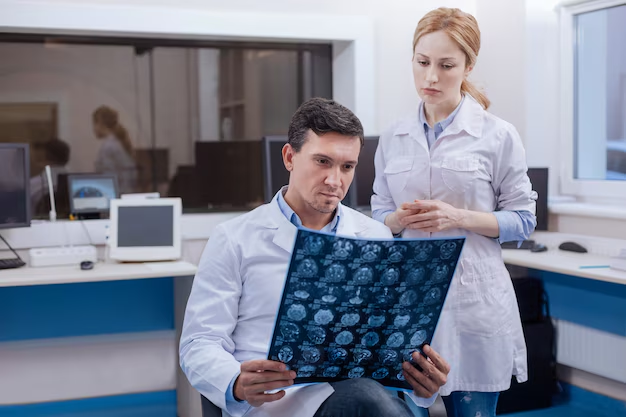Understanding Parkinson's Disease: How Is It Diagnosed?
Parkinson's disease is a progressive neurological disorder that affects millions worldwide, yet remains shrouded in complexity and mystery. When it comes to Parkinson’s, one common question often arises: How do doctors diagnose it? Given its subtle onset and variable symptoms, diagnosing Parkinson's disease can be challenging. Let's delve into the methods used by healthcare professionals to accurately identify this condition and understand the various components involved in the diagnostic process.
Recognizing the Symptoms
Parkinson’s disease is primarily known for its impact on movement, yet its symptoms extend beyond motor challenges. Key motor symptoms include tremors, especially noticeable in the hands or fingers, muscle rigidity, bradykinesia (slowness of movement), and postural instability that can lead to balance issues. However, non-motor symptoms are also prevalent, often manifesting as depression, sleep disturbances, and cognitive changes.
These symptoms can mimic other conditions, which complicates diagnosis. Accurate recognition is crucial, as early intervention can slow progression and enhance quality of life.
The Importance of Medical History and Examination
A detailed medical history and neurological examination form the cornerstone of accurate Parkinson’s diagnosis. During an initial consultation, doctors will inquire about the history of symptoms, family health background, and any medications that might cause side effects mimicking Parkinson's symptoms.
During the physical examination, neurologists assess:
- Tremors: Observing any involuntary shaking movements at rest.
- Muscle tone: Checking for rigidity or stiffness.
- Balance and gait: Evaluating posture and the way a person walks.
- Bradykinesia: Testing the ability to perform rapid, alternating movements.
Specialized Tests and Imaging
Although there is no definitive test for Parkinson's disease, several imaging techniques can exclude other conditions and bolster a diagnosis.
DAT Scan: The Dopamine Transporter Scan is an imaging procedure that helps visualize dopamine levels in the brain. People with Parkinson’s often have reduced dopamine, which is critical for motor function.
MRI and CT Scans: While these scans don’t diagnose Parkinson's directly, they help rule out other neurological conditions, such as hydrocephalus or a stroke, which might cause similar symptoms.
These non-invasive imaging techniques provide invaluable insights but are typically used in conjunction with other diagnostic methods.
Laboratory Evaluations
Blood tests do not diagnose Parkinson's but assist in eliminating other possibilities. They can check for thyroid disorders or liver problems, which may exhibit symptoms similar to Parkinson’s, helping narrow down the diagnosis.
Trial of Parkinson’s Medication
In some cases, doctors might prescribe Levodopa, a common Parkinson's medication. Observing the response to this medication can provide clues about the condition—significant improvement in symptoms often suggests Parkinson's.
Recognizing the Role of Expertise
Diagnosing Parkinson's disease requires expertise and experience. Neurologists specializing in movement disorders tend to be more adept at recognizing the nuances of Parkinson's, given its complex presentation that intertwines motor and non-motor symptoms.
The Differential Diagnosis Challenge
A crucial part of diagnosing Parkinson’s involves differential diagnosis, distinguishing it from other movement disorders with overlapping symptoms, such as:
- Multiple System Atrophy (MSA)
- Progressive Supranuclear Palsy (PSP)
- Essential Tremor
Each of these conditions presents with distinctive pathologies, and accurate identification is essential for effective management.
Recent Advances and Future Directions
Research into more predictive biomarkers for Parkinson's is ongoing. Advances in genetic testing and the exploration of molecular markers hold promise for earlier detection, potentially transforming the diagnostic landscape.
Artificial Intelligence is also playing an emerging role. Machine learning algorithms are being developed to identify patterns in movement and symptoms, offering the potential for even more nuanced diagnostic capabilities.
The Impact of Early Diagnosis
An early diagnosis enables more effective management strategies, including lifestyle modifications, physical therapy, and medication management. It also allows for timely intervention with emerging therapies and participation in clinical trials.
Key Points to Remember
- Parkinson's diagnosis relies on clinical assessment, combining medical history, physical examination, and exclusion of other conditions.
- Imaging and laboratory tests support the exclusion of other diseases but cannot confirm Parkinson's on their own.
- Levodopa trials and specialist evaluations often provide additional evidence in diagnosing.
- Future developments in biomarkers and technology promise earlier and more precise diagnosis capability.
When evaluating a potential Parkinson's diagnosis, we should understand that it involves a multi-faceted approach that is gradually refined as medical science advances. Accurate diagnosis empowers patients with the knowledge needed to make informed decisions about their health and treatment pathways.
🌟 Summary: Navigating Parkinson’s Diagnosis
- Motor & Non-Motor Symptoms: Recognize tremors, rigidity, and cognitive changes.
- Detailed History & Exam: Essential for identifying patterns and ruling out other conditions.
- Imaging Tools: Use DAT scans and MRIs for supporting data.
- Medication Response: Observing symptom improvement with Levodopa can be indicative.
- Expert Consultation: Neurologists specializing in movement disorders enhance diagnostic accuracy.
- Emerging Tech: Genetic research and AI offer promising future diagnostic tools.
🔍 For further awareness and management, engage with specialists and stay informed on emerging research.

Related Articles
- Are There Environmental Causes Of Parkinsons
- Can Alcohol Cause Parkinson's
- Can Concussions Cause Parkinson's
- Can Females Get Parkinson Disease
- Can Head Trauma Cause Parkinson's
- Can Parkinson Disease Cause Dizziness
- Can Parkinson's Affect Eyesight
- Can Parkinson's Affect Memory
- Can Parkinson's Affect Speech
- Can Parkinson's Affect Vision